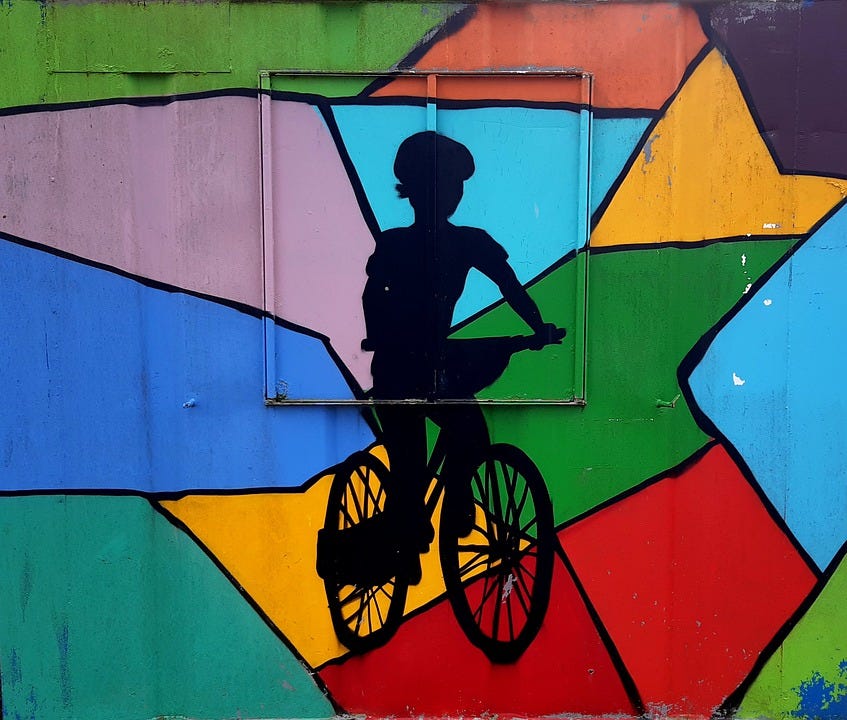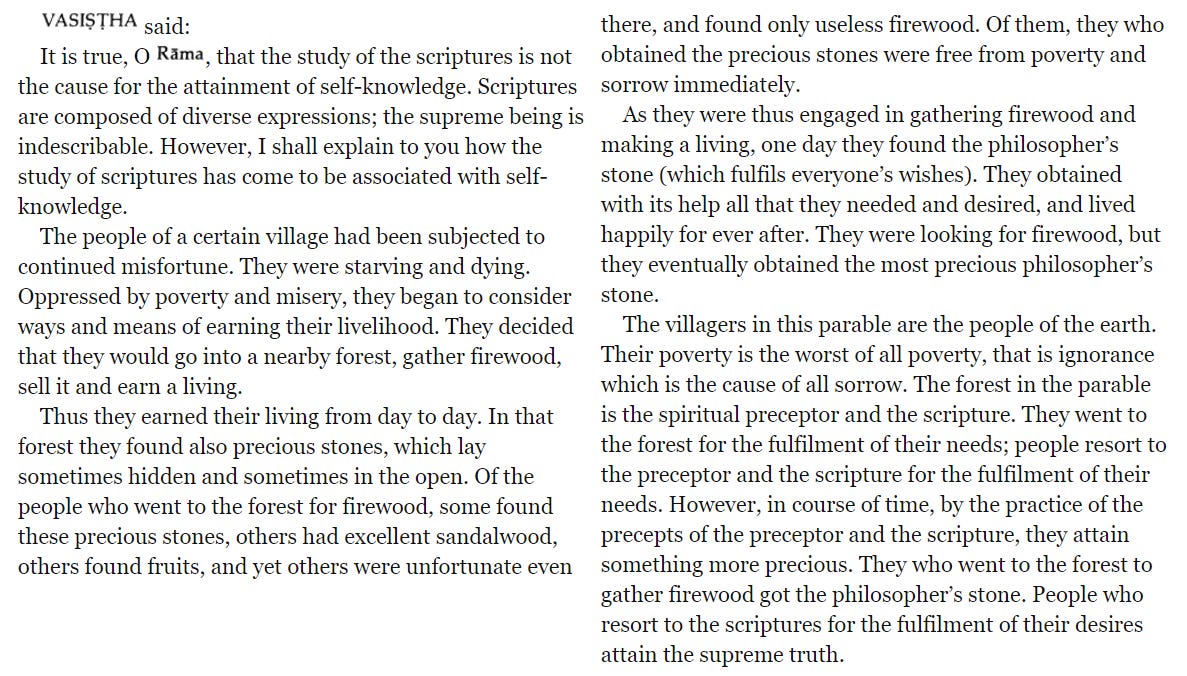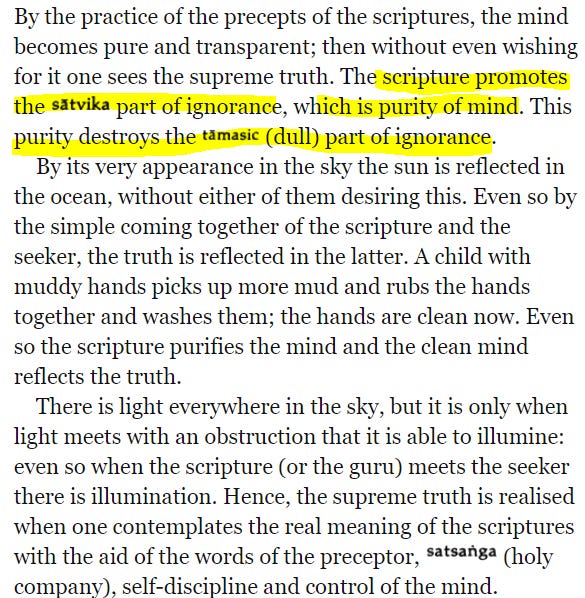Insightful newsletter of Drishtikone: Issue #287 - Ram Navami, a celebration of a unique paradigm!
April 21st was Ram Navami. The birth of Ram. Ram was not just a being who manifested the divine. He was a unique paradigm of living. Very few like him have walked the planet. May we know his bliss!
Image by Scottish Guy from Pixabay
“Two possibilities exist: either we are alone in the Universe or we are not. Both are equally terrifying.” ― Arthur C. Clarke
Thank you Ranjanji for yet another generous contribution to Drishtikone! Thank you again, sir. 🙏
Ram Navami - Time to celebrate balance of life
April 21st was Ram Navami. We celebrate the birth of Ram. A special being who attained to the highest level of consciousness that one can. He did that with all the pressures of society, its rules and his integrity intact.
Life can take a toll on many specifically because most of the things in society are not in our hands. Many cut corners, cheat, play it wrong. To still follow the rules that someone has created to one’s own detriment while being equanimous takes a different level of integrity. Very few can live that way.
Ram did.
That is why he has been the greatest inspiration for many. Specifically the poor and those who kept the hope of life alive despite attacks and subjugation by the Islamic hordes and the British savage colonial empire.
As Nanak said in his baani:
संग सखा सब तज गयो, कोई न निभ्यो साथ
कहे नानक इस बिपत में, टेक एक रघुनाथ
(Relative and friends have left me, no one has walked along. Says Nanak in this miserable time, the only support is Raghunath (Ram))
As long as life is, you cannot wish away tough times. What you can aim for is - a level of balance and equanimity in you such that you can handle every situation joyfully. Without being miserable.
Ram, a paradigm
Ram was not just a being who manifested the divine.
He was a paradigm.
In fact, in Dharmic spiritual history there are three beings who have personified three different paradigms of engaging with society while displaying the highest levels of spiritual state.
Ram: Lived within the society and followed norms not created by him to their complete extent without question.
Krishna: Lived within the society but created his own norms to handle things while establishing Dharma, where Dharma was clearly understood to be different from moral constructs of the “lazy gossip” variety which is popular with the masses.
Shiva: Lived outside the society. Only interacted when he was faced with the highest form of devotion (Sati/Parvati) or disciple-ship (Saptarishis). He created and followed his own rules and laws. Yet, whatever he did was the basis of Dharma.
It does not matter how you look at the society or whether you follow its laws or push yours - you can still reach the highest state of spiritual consciousness.
However, one who has chosen the path of Ram’s consciousness cannot have the wherewithal to follow that of Shiva. They are fundamentally different and in a way opposed to each other. Even though they lead to the same state.
One who is aligned to Ram cannot question the norms of the society, irrespective of what the cost is to him or his family. He cannot disregard the society. Only such a path can produce a Hanuman.
One, who is aligned to Krishna is playful and loving yet ruthless with his own ways of doing things, no matter what the situation. Only such a path can produce a Meera.
One who is aligned to Shiva has no place in his life and path for the society necessarily. He may need to adjust if his work really demands, but he has it in him to disregard the society completely. Only such a path can produce an Aghori.
The paths of Hanuman, Meera, and Aghori are very different. They are fundamentally different in approach and being.
The problem in the larger self-assured (usually educated and moneyed) Hindus is that they keep throwing words like “devotee of Ram” without understanding the cost it entails on one’s ego, ways, and desires.
It is not an easy path.
Devotees who are on the path only to their isht Ram become shining beings but find it tough to look out for their own good.
That is why almost everyone who says he is a devotee of Ram in today’s world is basically deceiving himself and the world. For, at best he can be an admirer, albeit an ignorant one.
It is easy to admire someone when you don’t understand who he really was by making up romantic imagery about him.
Almost every modern wallpapers of Ram are aggressive with arms. Not that he was averse to that. But that does not describe his fundamental strength - Maryada Purushottam. Without maryada, there is no Ram.
When I first lay my hands on Vasistha’s Yoga - the English translation of Yog Vashishta by Swami Venkatesananda - the beliefs that I was fed by the society of today with respect to Hinduism just could not handle what Ram was taught by his own Guru.
Almost everything he would say would threaten every belief that I carried as a Hindu. After struggling for many months, I realized that if there is a dichotomy between my understanding of things and what Ram was taught, then I have to be mistaken about things.
The Truth cannot be brought down to my level. I will have to rise to the level of Truth.
It took me over 2 years before I could go past the first three chapters!
We cannot expect the Sages, the Gurus to dilute the work of Dharma and then still expect Dharma to survive, while we push them to contaminate it because we cannot handle the dichotomy between the Truth and our limited knowledge based on the scriptural understanding of “lazy gossip” variety.
For example, there is usually a fight put up by many Hindu activists on the importance of scriptures. Versus experience.
When a Yogi says that he has not studied the scriptures but “knows” the Truth, such activists run a campaign against him. Little realizing that these same “activists” who swear by Ram, had they been around in his time and given their history of outrage, would have abused Ram and Ram’s Guru the same way!
Let us take a peak.
At the end of their conversation in Yog Vashisht, Ram asks Sage Vashishta an important question.
Self-knowledge and spiritual attainment are beyond words.
For words are the slaves of the reader and the listener. They are as good - or bad - as the reader.
“What is the use of the scriptures?” Ram asks, even when scriptures cannot lead to attainment.
To this, Sage Vashishta explains the importance of scriptures.
Truth, that one seeks, is realized via sadhana and self-effort. Worship, scriptures, words, charity, etc do not lead to the realization of the Truth.
Then how do the scriptures help?
They lead us to a point where one is aligned to a state which lends itself to seeking and spiritual movement.
All the three states of Saatvik, Raajasik, and Taamasik are part of ignorance, even when Saatvik is the highest amongst these. Saatvik state lends to a place where seeking for Truth is automatically triggered.
Scriptures take you to a point where you would want to know the Truth. Whether you can do it or not is really up to you.
Notice how even within the Saatvik state, one is within the realm of ignorance nonetheless.
This is precisely what Krishna explains to Arjun as well in Bhagwad Gita. Please read our newsletter - Issue #281 - Dharma, Yog, and Hinduism - to relate to that.
त्रैगुण्यविषया वेदा निस्त्रैगुण्यो भवार्जुन |
निर्द्वन्द्वो नित्यसत्त्वस्थो निर्योगक्षेम आत्मवान् || 45|
The knowledge found there in all Vedic texts deals with the sense objects and their experiences only. These sense objects and their relative experience are in fact relative knowledge and in other words ignorance (of the Self) only. Therefore free yourself from all that relative knowledge and the three attributes (guṇa-s of prakṛti) O Arjuna! Be clear of conflicts, stay in the essence of the 'Self', forget the thought of body-mind and their all past and future concerns, and abide thus in the Self. (Source)
The three gunas (त्रैगुन) are सात्विक (saatvik), तामसिक (taamsik), राजसिक (raajasik). त्रैगुण्यविषया is the domain of the three Gunas. Which are the Vedas. Why is that so?
Because in the domain of the written word, there is a distinction between knower, knowledge, and the object of knowledge (ज्ञाता ज्ञान और ज्ञेय). The highest state of such a domain can be सात्विक (saatvik) but it still is a place where you create karmas. You are not free from the karmas, and so within the cycle of births. The idea is to go beyond the cycle of births, so all the karmas, not just the तामसिक (taamsik) and राजसिक (raajasik)!
That is precisely what Arjun is being asked to do - Go beyond the domain of the three Gunas which is attained via scriptures, which can at best lead you to the saatvik state, to a point where you are established in Truth (नित्यसत्त्वस्थो) by being beyond Duality (निर्द्वन्द्वो).
Nature of the physical is duality. Once you go beyond duality - Advaita (अद्वैत) - you are beyond the physical realm and in the realm of Truth.
One indivisible, eternal, and unchanging Truth.
That is the state, Shri Krishna tells Arjun, is the state free from anxiety, secure/unchanging/eternal (निर्योगक्षेम) and established in self (आत्मवान्).
The struggle to align with and live a Dharmic life, where Dharma is level of integrity in living that is consistent with universal inclusion, is critical to the future of humankind.
It is achieved via one’s ability to include everything - seen and unseen - in one’s own expanse.
Inclusion that stems from the fundamental one-ness of the consciousness. The easiest way to understand it is - whatever is aligned to life (not as in living, but the throbbing conscious life within) is aligned to Dharma. Whatever is not, is a-dharmic.
One is Dharmic not because someone ‘ordained’ it so. But because one lives beyond any reach of word or ideas. It is the realm of All.
That is what Ram personified.
Amish and their history
Around 500 Amish migrated from etween 1717 and 1750, Palatinate region in southwestern Germany to US. They eventually settled in Lancaster County.
That is where we were during this journey I alluded to in my last newsletter.
The Old Amish order is more traditional and considers technological advance as undesirable. They do not use automated equipment and items. For example, they shun farm equipment and even cars. They mostly use the horse carriages.
They raise large families with six or even seven children. As a result, their population had grown 149% from 1992 to 2017. (Source)
The whole movement, which is basically a religious Christian movement, started when Alsatian Mennonite Anabaptists had a breakaway group in 1693 led by Jakob Ammann. It was this group that was derided as the Amish. A name that stuck with them.
In Europe’s history, what you will find interesting is that different cultural ways were started out of different religious interpretations by different “leaders” who created their own “Church.”
Same book. Same Jesus. Same story. Yet, one detail would be changed and suddenly one group would find enough reason to persecute the other.
Compare this to the ways in which spiritual truth was sought in the East, specifically India. Radically different ways - Aghori to Bhakti to Jnana - and within them thousands of different tributaries. Despite such fundamentally different ways, no one was ever persecuted for their seeking as long as it did not hurt anyone else. Those who knew, knew who was going in the right direction and who was just making a mess of things. Even then, the way to handle such groups was never persecution. Charvakas - the materialists who did not believe in god were one such example.
market corner: 10 quick bytes
India records 22 IPOs worth over $2.5 bn in the January-March period - more
IBM-backed US forecaster predicts marginally above-normal monsoon in 2021 - more
Cryptocurrency: Could India become a tech powerhouse for innovation if it lands a pro-crypto policy? - more
FMCG companies giving more importance to kiranas over Ecommerce - more
ECLGS: How Modi govt’s Rs 3-lakh-crore credit scheme put Covid-hit MSMEs back on recovery track - more
Farm exports up 16.88 percent in Apr-Feb FY21 - more
SaaS start-up Chargebee in unicorn club with fresh $125m funding - more
Y Combinator-backed Cashfree to enable 3 million small merchants on Dukaan’s platform to accept e-payments - more
States to get Covishield vaccine at Rs 400, pvt hospitals at Rs 600 a dose - more
New launches in residential market doubled in Delhi-NCR, sales increased by 23%, says report - more
nota bene
UK invites India to G7: The United Kingdom has invited India for an in-person G7 foreign ministers meeting that will take place in London from May 3-5. The UK as the chair of the grouping for this year has invited India, along with Australia, South Korea, South Africa, and the Chair and Secretary-General of the Association of Southeast Asian Nations (ASEAN). UK Foreign Secretary Dominic Raab said,"the meeting of G7 Foreign and Development Ministers next month is an opportunity to show how the world’s biggest democracies work together to ensure equitable access to vaccines, build back better from the pandemic, support girls in the poorest countries get a good quality education and agree ambitious action to tackle climate change." (Source)
Fake news from Mainstream media: Several media outlets recently made misleading assertions that India had exported a large quantity of medical oxygen from January 2021 to March 2021. The reports by mainstream media organizations, including Moneycontrol, News 18, and NDTV, suggested that India had exported nearly 9,300 MT of oxygen in the financial year ending 31st March 2021. Some reports also claimed that India exported 9,884 MT of medical oxygen from January 2021 to March 2021. These reports were used and propagated by opposition leaders to attack the Modi govt, accusing the govt of exporting oxygen at a time when the country is facing a shortage of the commodity. The reports of oxygen exports were staunchly refuted by the Indian government, who termed the reports as misleading and asserted that malicious propaganda is being spread regarding the export of oxygen by India during the pandemic. It further slammed the media organizations who peddled the falsehoods, claiming that they had mistaken industrial oxygen for medicinal oxygen. (Source)
130 million vaccinated: India is one of the fastest countries to administer over 13 crores COVID-19 vaccine doses, taking only 95 days to do so, the Union Health Ministry said on Wednesday. All these doses have been given free by GoI to state governments. The United States took 101 days while China took 109 days to administer these many doses, the ministry said. As per the provisional report cited by the government, cumulatively, India has administered 13,01,19,310 doses through 19,01,413 sessions. (Source)
Chinese Naval Base in Africa: A recently completed pier at the Chinese naval base near the entrance to the Red Sea is large enough to support an aircraft carrier, the top U.S. commander for Africa told lawmakers on Tuesday. Referring to the Chines naval base in Djibouti, U.S. Africa Commander Army Gen. Stephen Townsend told the House Armed Services Committee that the People’s Liberation Army was expanding its existing naval installation adjacent to a Chinese-owned commercial deep-water port and also seeking other military basing options elsewhere on the continent. (Source)
Less Sleep = Dementia: Middle-aged adults who sleep six or fewer hours a night may be at higher risk of developing dementia in later life, a new study suggests. People age 50 or 60 who regularly slept six hours or less each night were more likely than those who slept seven hours to be diagnosed with dementia, according to the study published Tuesday in the scientific journal Nature Communications. Even after controlling for cardiac, metabolic and mental-health issues, the study researchers found that 50-year-olds who were sleeping six hours or less a night had a 22% higher risk of developing dementia later in life. Sixty-year-olds were 37% more likely to develop the disorder. The comparisons were with people who slept for seven hours each night. (Source)
video corner: The Kumbh!
Kumbh is the largest congregation on the planet.
No one plans it. No one organizes it. No one controls it. People, different people, come and spend that time near the river Ganga. Work out their karmic obligations and leave. With the understanding that this pilgrimage would have helped shed some of the burden of lifetimes.
It aligns with the cosmic cycles of Jupiter, so the Mahakumbh, the large congregation happens once in 12 years. It has been happening for thousands of years.
Even when no one in the world knew about other planets or that Earth revolved around the Sun, the Indian Sages had calculated the timeline of Jupiter’s revolution down to the day and hour. The Kumbh followed that.
The film unfolds the spiritual, cultural, and social importance of the Kumbh Mela and highlights its great relevance for the modern world.
Please do watch this video!!
Today’s ONLINE PAPER: Check out today’s “The Drishtikone Daily” edition. - THE DRISHTIKONE DAILY
Nuzzle Tweets “newsletter” - with tweets and stories that we read and follow in a day in one compilation on a daily basis - Nuzzle Drishtikone - just another way to keep up with things
SUPPORT DRISHTIKONE: If you consider our work important and enriching and would like to contribute to our expenses, please click on the button below to go to the page to send in your contribution. You can select the currency (for example, INR or USD, etc) and the amount you would like to contribute. Contribute to Drishtikone
If you like this post - please share it with someone who will appreciate the information shared in this edition
If you like our newsletter, please share it with your friends and family










